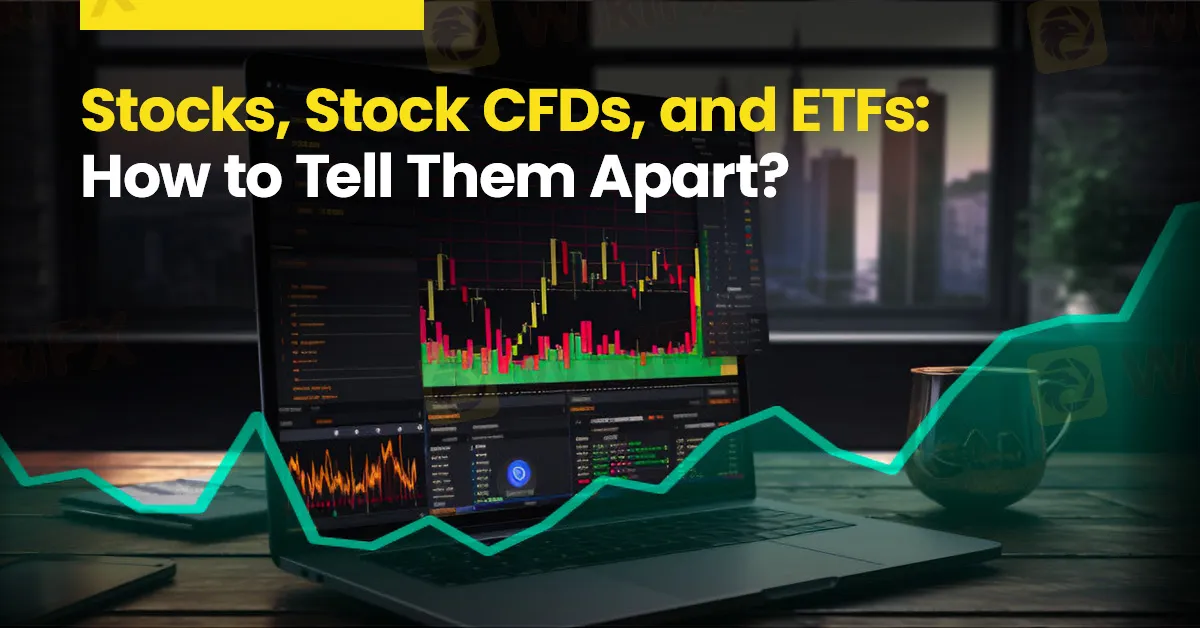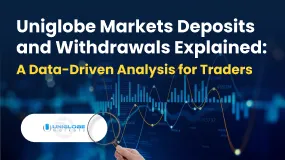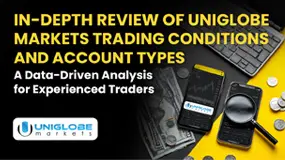简体中文
繁體中文
English
Pусский
日本語
ภาษาไทย
Tiếng Việt
Bahasa Indonesia
Español
हिन्दी
Filippiiniläinen
Français
Deutsch
Português
Türkçe
한국어
العربية
Stocks, Stock CFDs, and ETFs: How to Tell Them Apart?
Abstract:In the world of investing and trading, three common instruments often come into focus: stocks, stock CFDs (Contracts for Difference), and ETFs (Exchange-Traded Funds). While they all offer avenues to engage with the financial markets, they differ significantly in their structure, trading methods, and associated risks. This article thoroughly explains their differences to help you make informed decisions when choosing your preferred trading instrument.

In the world of investing and trading, three common instruments often come into focus: stocks, stock CFDs (Contracts for Difference), and ETFs (Exchange-Traded Funds). While they all offer avenues to engage with the financial markets, they differ significantly in their structure, trading methods, and associated risks. This article thoroughly explains their differences to help you make informed decisions when choosing your preferred trading instrument.
In the world of investing and trading, three common instruments often come into focus: stocks, stock CFDs (Contracts for Difference), and ETFs (Exchange-Traded Funds). While they all offer avenues to engage with the financial markets, they differ significantly in their structure, trading methods, and associated risks. Understanding these differences is crucial for making informed investment decisions.

Stocks represent ownership shares in a company. When you purchase a stock, you are essentially buying a piece of that company. This ownership comes with certain privileges and responsibilities. Shareholders may receive dividends, which are portions of the company's profits paid out to them. Additionally, stockholders often have voting rights, allowing them to influence corporate decisions.
Stocks are traded on stock exchanges such as the New York Stock Exchange (NYSE) or NASDAQ. These exchanges provide a regulated environment where buying and selling occur. However, owning stocks comes with risks. Market risk is a primary concern, as the value of stocks can fluctuate widely based on company performance, economic conditions, and broader market trends. Liquidity risk is another factor, as some stocks might be difficult to sell quickly without affecting their price.

A stock CFD is a derivative that allows traders to speculate on the price movement of a stock without actually owning the stock itself. This financial instrument offers unique characteristics, including the use of leverage. Leverage enables traders to control a larger position with a smaller amount of capital, potentially amplifying both gains and losses.
Unlike stocks, CFDs do not confer ownership of the underlying asset. Instead, traders are merely speculating on price changes. This makes it easier to profit from falling prices, as CFDs facilitate short selling. Additionally, CFDs can often be traded outside regular market hours, providing greater flexibility.
However, trading CFDs carries significant risks. Leverage can lead to substantial financial loss if the market moves against the trader's position. Counterparty risk is also a concern, as CFDs are typically traded over-the-counter (OTC) through brokers, posing the risk of broker default. Market risk remains a factor, with the value of CFDs fluctuating based on various market conditions.

Exchange-Traded Funds (ETFs) are investment funds that hold a basket of assets, such as stocks, bonds, or commodities, and are traded on stock exchanges like individual stocks. One of the key advantages of ETFs is diversification. By holding a variety of assets, ETFs can reduce risk compared to investing in individual stocks.
ETFs are known for their liquidity, as they can be bought and sold throughout the trading day at market prices. They come in various types, including those that track indexes (e.g., S&P 500), sectors (e.g., technology, healthcare), commodities, or specific investment strategies. ETFs are generally cost-effective, often featuring lower expense ratios compared to mutual funds due to their passive management.
Despite their advantages, ETFs are not without risks. Market risk is inherent, as the value of ETFs can fluctuate based on the performance of the underlying assets. Liquidity risk may also be present, especially in ETFs with lower trading volumes. Additionally, tracking error is a consideration, as ETFs might not perfectly mirror the performance of their underlying index due to fees and other factors.
In summary, stocks, stock CFDs, and ETFs each offer distinct opportunities and challenges for investors and traders. Stocks provide direct ownership in a company, along with potential dividends and voting rights. Stock CFDs allow for speculation on price movements without ownership, often involving leverage and additional risks. ETFs offer a diversified, cost-effective way to invest in a basket of assets, traded like stocks on an exchange.
Understanding these differences is essential for selecting the right instrument to align with your investment goals and risk tolerance. Whether you seek direct ownership, speculative trading, or diversified exposure, there is a financial instrument suited to your needs.

Disclaimer:
The views in this article only represent the author's personal views, and do not constitute investment advice on this platform. This platform does not guarantee the accuracy, completeness and timeliness of the information in the article, and will not be liable for any loss caused by the use of or reliance on the information in the article.
Read more

Scandinavian Capital Markets Exposed: Traders Cry Foul Play Over Trade Manipulation & Fund Scams
Does Scandinavian Capital Markets stipulate heavy margin requirements to keep you out of positions? Have you been deceived by their price manipulation tactic? Have you lost all your investments as the broker did not have risk management in place? Were you persuaded to bet on too risky and scam-ridden instruments by the broker officials? These are some burning issues traders face here. In this Scandinavian Capital Markets review guide, we have discussed these issues. Read on to explore them.

Uniglobe Markets Deposits and Withdrawals Explained: A Data-Driven Analysis for Traders
For any experienced trader, the integrity of a broker isn't just measured in pips and spreads; it's fundamentally defined by the reliability and transparency of its financial operations. The ability to deposit and, more importantly, withdraw capital seamlessly is the bedrock of trust between a trader and their brokerage. When this process is fraught with delays, ambiguity, or outright failure, it undermines the entire trading relationship. This in-depth analysis focuses on Uniglobe Markets, a broker that has been operational for 5-10 years and presents itself as a world-class trading partner. We will move beyond the marketing claims to scrutinize the realities of its funding mechanisms. By examining available data on Uniglobe Markets deposits and withdrawals, we aim to provide a clear, evidence-based picture for traders evaluating this broker for long-term engagement. Our investigation will be anchored primarily in verified records and user exposure reports to explain the Uniglobe Mar

In-Depth Review of Uniglobe Markets Trading Conditions and Account Types – An Analysis for Traders
For experienced traders, selecting a broker is a meticulous process that extends far beyond headline spreads and bonus offers. It involves a deep dive into the fundamental structure of a broker's offering: its regulatory standing, the integrity of its trading conditions, and the flexibility of its account types. Uniglobe Markets, a broker with an operational history spanning over five years, presents a complex case study. It offers seemingly attractive conditions, including high leverage and a diverse account structure, yet operates within a regulatory framework that demands intense scrutiny. This in-depth analysis will dissect the Uniglobe Markets trading conditions and account types, using data primarily sourced from the global broker inquiry platform, WikiFX. We will explore the Uniglobe Markets minimum deposit, leverage, and account types to provide a clear, data-driven perspective for traders evaluating this broker as a potential long-term partner.

KEY TO MARKETS Review: Are Traders Facing Withdrawal Delays, Deposit Issues & Trade Manipulation?
Did your deposits in KEY TO MARKETS’ forex trading fail to reflect despite numerous follow-ups with the broker? Are you facing margin lock up and withdrawal issues due to stuck limit orders? Do you find losses due to wide spreads on the KEY TO MARKETS login? Similar issues have been expressed by many traders online. In this KEY TO MARKETS review article, we will take a close look at the complaints. Read on!
WikiFX Broker
Latest News
Gratitude Beyond Borders: WikiFX Thank You This Thanksgiving
MH Markets Commission Fees and Spreads Analysis: A Data-Driven Breakdown for Traders
Alpha FX Allegations: Traders Claim Account Blocks, Withdrawal Denials and Security Breaches
How to Become a Profitable Forex Trader in Pakistan in 2025
CFTC Polymarket Approval Signals U.S. Relaunch 2025
Zipphy Exposed: No Valid Regulation, Risk Warning
KEY TO MARKETS Review: Are Traders Facing Withdrawal Delays, Deposit Issues & Trade Manipulation?
FCA Consumer Warning – FCA Warning List 2025
Australia’s Fraud-Intel Network Exposes $60M in Scams
Malaysia’s SkyLine Guide Top 25 Brokers Are Out!
Currency Calculator



